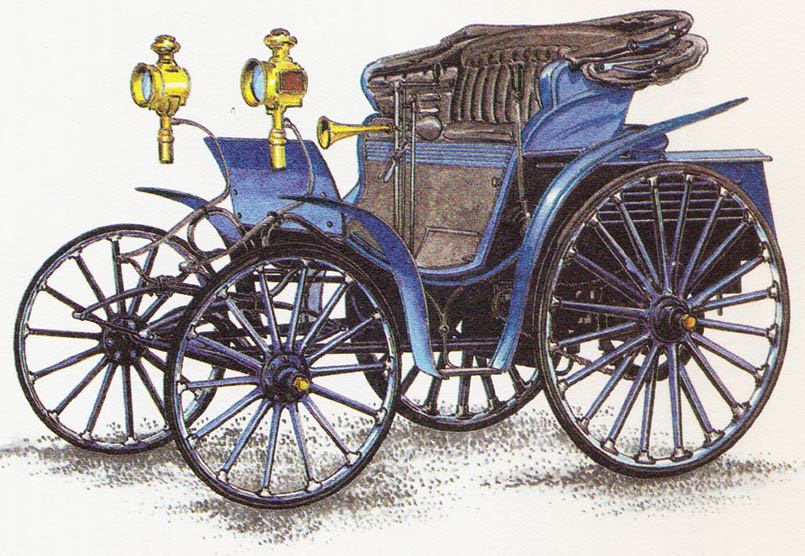BENZ VICTORIA – year 1893
Manufacturer: Benz & Co., Rhenish gas engine factory, Mannheim, Germany.
One of the reasons for the poor commercial success of Benz's first car was fact, that it was a three-wheeler. Therefore, from 1891 r. Benz worked on solving the problem of steering the two front wheels. Two years later, he found a solution in the form of vertical steering knuckle pins. He patented his idea. This made it possible to build a new vehicle, this time on four wheels. Your success C.. Benz commemorated the name of a new type of car - Victoria. The excellent properties of the vehicle have not only been tested in city traffic, but also on longer journeys.

W 1894 r., when Count de Dion organized the first Paris-Rouen car races in Paris, in Liberec, the Czech Republic, the manufacturer, baron Theodor Liebieg, competed in his Victoria for the first rally. Together with their friend Stranski, they decided to cover the route from Liberec via Mannheim to Reims and back. With average speed 13,5 km / h they reached the town of Waldheim on the first day, distant fr 195 km from Liberec. The car was able to reach maximum speed 22 km/h. The next stops were Eisenberg and Eisenach. On the fourth day the most difficult part came - the non-stop drive to Mannheim, Victoria's place of origin. It lasted 26 hours. Carl Benz personally welcomed the enterprising baron and held a ball in his honor in his workshops. The next day the route led to Gondorf, where there was a long break. The car was behind him 1000 km, being consumed 140 liters of gasoline and 1500 liters of water to the radiator. From Gondorf, the players returned to Reims and back to Liberec at a slower pace.
Victoria-Benz, on which Baron Liebieg passed 2500 km, it had a recumbent single cylinder engine. Cylinder diameter - 130 mm, piston stroke 150 mm, displacement 2000 cm3, maximum power 2,2 kW (3 KM), by 470 RPM. Four-stroke, the water-cooled engine was located at the rear of the vehicle and powered the rear axle with two flat belts and two chains. The handbrake also acted on the rear wheels, with solid rubber rims. Vehicle curb weight - 650 kg, length - 2,9 m. The price of such a vehicle ranged from 3800 do 4200 golden marks.
Victoria was Benz's favorite car. In different versions - vis-a-vis, phaeton - it was produced until 1899 r.